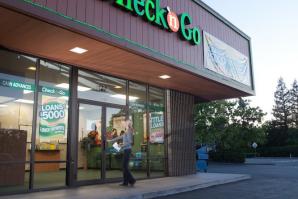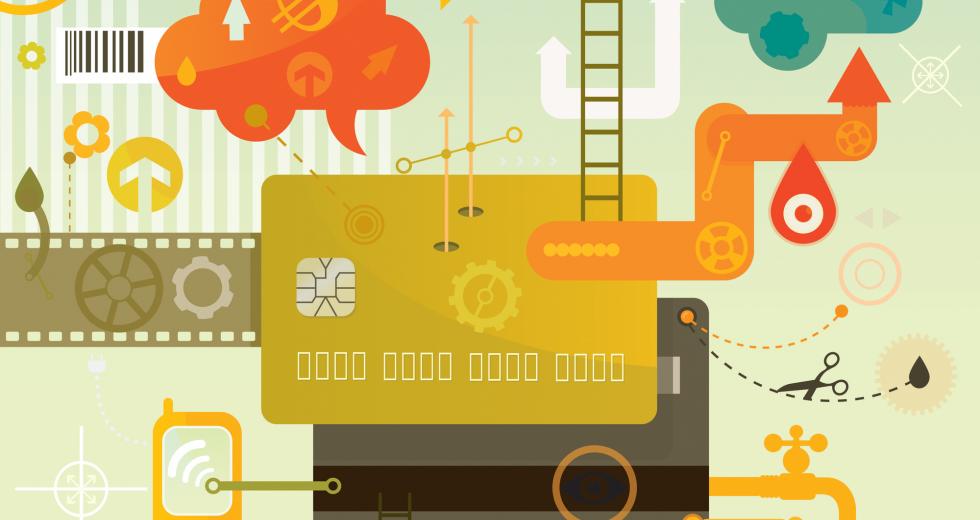Banks are running up against some odd new competitors these days. Big box retailer Costco is advertising mortgages. Wal-Mart has issued its own debit card. Amazon is offering loans to merchants in its online marketplace. Nonbank lenders and cash-advance firms are promising money in minutes to businesses that qualify. Even pawnshops have gone digital with websites that allow desperate business owners to ship out personal belongings in exchange for instant cash.
Two factors are spurring these new players, says banking consultant Margaret Kane of Kane Bank Services in Sacramento. First, the Internet makes it much easier to move cash around without the burden of bricks and mortar. Much of the expense in traditional banking is the physical network of bank branches.
Second, the newcomers aren’t hindered by bank regulations.
“Banks have cost of capital; they have to adhere to capital ratios,” Kane says. “In the lending sector, banks have to report (annual percentage rates) on lending, and if their lending rates are considered beyond what’s necessary, they are considered usury.”
When a bank makes a loan, it’s with the knowledge that within 12 to 18 months, a government regulator will be going over the books to judge the quality of the loan, says Beth Mills, spokeswoman for the California Bankers Association. “Sometimes it does take a little longer when you do go with a bank, but from our perspective it is for good reason.”
In interviews, the new breed of lenders is often heard saying that banks don’t want to make small loans to small businesses anymore. Most banks are unable to give access to less than $100,000, and they focus on credit quality scores of 720 or higher, says Kathryn Petralia, chief operations officer and cofounder of online cash-advance company Kabbage.
“That’s not quite true,” Kane says. “Banks do want to lend $5,000. The problem is, people need to meet their credit requirements.”
There’s also a drawback for borrowers, of course. These nontraditional lenders charge much higher interest rates than banks. Banks say that any business going the high-interest route may not be a good credit risk for a traditional loan in the first place. But as business owners get more used to the idea of walking past the bank doors, some may take on a high-priced loan they could have avoided.
Some competitors are lending their own money to businesses — perfectly legal as long as they don’t also take deposits. Amazon would not talk about its lending efforts, but published reports say the online retailer in late 2011 began lending money to merchants who market their products on Amazon. The Wall Street Journal quoted these businesses saying they were getting $1,000 to $38,000 apiece at interest rates from less than 1 percent to 13.9 percent.
Some newcomers borrow money and re-lend it. Lending company On Deck Capital Inc. borrows money from Goldman Sachs and re-lends it. Loan approvals can be done online in as little as a day and funded up to $150,000 in as little as two days.
But they want their repayments fast too, in daily installments of $169 to $186 on a $20,000 loan, for example. And the interest is steep, anywhere from an annualized 18 percent to 40 percent on that $20,000 example.
On Deck has about 200 different industries in its portfolio, says CEO Noah Breslow.
“Everyone from classic, mainstream retail to doctors and dentists. It’s clear that there is a place in the market for a loan that could be very easy and frictionless to apply for and very fast to turn around.”
The speed comes from the fact that so much information can be put online and crunched by software.
Kabbage, a company that advances cash against accounts receivable, gathers data from myriad sources, including checking accounts, PayPal, Facebook and Quickbooks (with the applicant’s permission), in order to evaluate how a borrower handles customer relationship management, says Petralia.
The concept behind pawning, where lenders use personal property as collateral, dates back to ancient Greek and Roman Empires. But for the first time, Denver-based Pawngo has taken the idea online with enough venture backing to go national. Customers email pictures and descriptions of their goods, and Pawngo gives a rough estimate of value. The owner ships the item to Pawngo overnight, and Pawngo can then inspect it in person and make a firm offer. If the item’s owner doesn’t accept the firm offer, Pawngo ships the item back at its own expense.
CEO Todd Hills speaks of one client, the owner of a trucking company who needed $15,000 to get three disabled trucks back on the road. He handed over a diamond that had been in his family for generations. Hill valued it at $30,000 and gave the seller $15,000.
With pawning, there are no credit checks and no collection agencies or lawsuits in case of default. The pawnshop simply sells the item. The downside is some of the highest possible interest rates. In the case of Pawngo, it’s 3 percent to 8 percent per month. The trucker ended up paying $2,700 in interest for three months’ use of the $15,000. And, of course, that’s on top of the original $15,000 for the return on his diamond.
As Hills sees it, the business owner got his trucks back on the road earning money and kept nine people employed.
“I think that far outweighed the $2,700,” Hills says.
Since Pawngo launched in the summer of 2011, about half of its business has been from companies of less than $3 million in revenue and with five to 25 employees. It’s a market segment that traditionally has depended on lines of credit from banks, and those have been much harder to come by in the last few years, Hills says.
Pawning, on the other hand, is about borrowing against what you already have rather than leveraging against the future.
Pawngo took the original pawnshop concept, which conjures images of blighted corner shops filled with aging guitars and collectables, and turned it into a robust financial organization with the power to make hefty loans.
“You don’t just walk into a brick-and-mortar store and walk out with 50 grand. They are handling different financial problems,” Hills says.
An online lender charging 30 percent annual interest can afford to write off some bad loans and still make a profit. It’s not so great for the borrower.
“Using credit cards for cash advances would be a better deal,” Kane says. “People are getting ripped off, and they don’t even know it.”
That assumes, of course, that the borrowers have good enough credit to travel a more conventional route. Banks also typically insist that their business borrowers also be depositors. But it’s hard to believe that everyone paying ultra-high interest rates on short-term loans are in such poor financial shape, she says.
Banks could be doing a better job of appealing to the same market that Amazon, Kabbage and the others are targeting.
“If you look at the positioning of these companies, they make lending easy, they make it very straightforward. Banks do need to simplify a lot of their processes, have more marketing activities directed to this small-business segment,” Kane says.
But replacing a banker’s judgment with a risk-evaluating algorithm is “abhorrent” to bankers, says Chris Cole, senior vice president with the Independent Community Bankers of America. “They like to know who they are lending to, know their business. They are touchy-feely type lenders.”
And for now banks aren’t feeling much pressure from the high-interest lenders.
“Generally, we are more concerned about the big-box guys,” Cole says. “Someone like Wal-Mart is in a lot of the rural communities we compete with.”
Through associations like Cole’s, banks have lobbied to keep Wal-Mart out of the loan arena, and the Dodd-Frank Wall Street Reform and Consumer Protection Act put a moratorium on the idea until 2013. Cole says his association will lobby to extend it. So far they have been successful. But Wal-Mart’s ability to take deposits hits at the heart of what makes a bank a bank, and bears watching.
The new Consumer Financial Protection Bureau is also tightening up some regulations on mortgage lending.
In some cases, these new players are only conduits for more traditional banking competitors. Costco, for example, is merely the marketing arm for a group of 10 mortgage companies led by First Choice Loan Services Inc. in New Jersey. For entrepreneurs, home equity has long been a relatively easy source of funds for business ventures.
Costco doesn’t even get a cut of the mortgage fees. But advertising mortgages does add some luster to its brand identity.
“The value proposition is unique,” says Jay Smith, Costco’s director of financial services. “We are offering a significant discount on the rate and the fees associated with a mortgage.” The savings can be as much as $5,000, he says.
The process starts online, but members don’t have to give up much personal information until contacted live by a loan officer. While Costco is not disclosing loan volume, members are responding well enough to have spurred conversation about adding more lenders to the pool.
Likewise, Wal-Mart’s new Bluebird card is really an American Express product with Wal-Mart’s name on it. The prepaid, reloadable debit card acts a lot like a checking account. Users can even make deposits by taking a picture of a check using a free smartphone app.
Some banks have already partnered with the competition. On Deck is already working with some national and super-regional banks, says Breslow. When a loan applicant can’t meet the banks criteria, they refer the customers to On Deck. Some banks also are offering their own prepaid debit cards along the same lines as Wal-Mart’s Bluebird product.
But the real reason people are turning to non-bank sources isn’t so much about the technology, the products or even the speed, says Petralia of Kabbage. “The real reason is that we say yes.”
Recommended For You

Banking on Content Marketing
Community banks embrace new marketing strategies to supplement traditional advertising
Having just begun using social media in 2012, Safe Credit Union is relatively new to content marketing. But it hasn’t taken long for the company to discover the benefits of engaging online with its customers and potential consumers.

Cashing Out
Life among the ranks of the unbanked
Two hundred, four hundred … twenty, forty, sixty, eighty, five hundred …
As the young woman behind the glass divider counts out the entirety of my paycheck, I can’t help but think of how measly it looks before I stuff it in my wallet.



